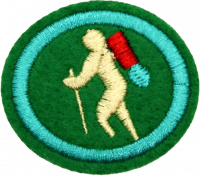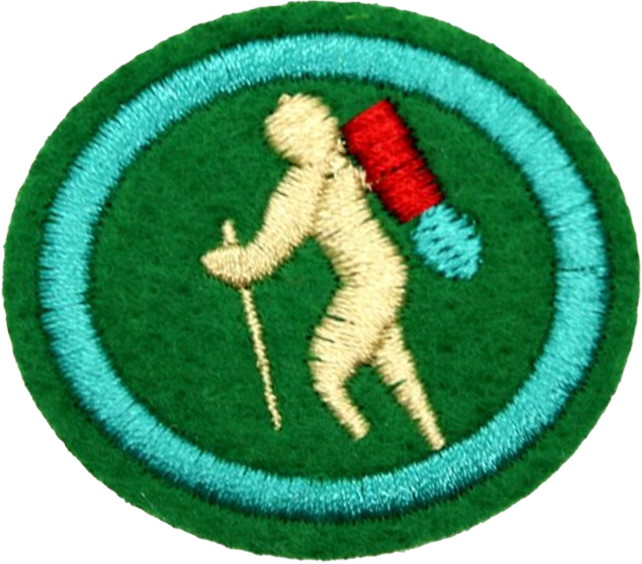Especialidades JA/Excursionismo pedestre com mochila/Repostas
Nível de Habilidade
2
Ano
1986
Version
30.11.2024
Autoridade de Aprovação
Conferência Geral
1
2
3
4
- Good quality map of the area
- Compass
- Knife
- Flashlight
- Water treatment equipment
- Water bottle
- Food
- Change of clothes
- First aid kit
- Rain gear
- Backpack
- Firelighting equipment
- Sleeping bag
- Sleeping pad
- Extra socks
- Good quality hiking boots or hiking shoes
- Eating and cooking utensils
- Cooking gear (mess kit)
- Backpacking stove and fuel
- Tent or tarp
- Toiletries (toothbrush, toilet paper, soap, etc.)
- Compact shovel
5
6
- Lay out all your gear where you can see it, next to your pack.
- Look for empty spaces in your gear - for instance, there may be room inside your cooking pot. Put any small items that will fit inside that to conserve space. Look for other "hidden" space as well.
- For an internal frame backpack, put the sleeping bag in first, at the bottom. For an external frame, tie it underneath the pack.
- Load the heavy items next, placing them as close to your back as you can. This will shift the center of gravity forward which will help your balance and improve comfort. Be sure nothing is going to poke you in the back though.
- Put the lighter items such as clothing in towards the outside of the pack.
- Put the things you'll need on the trail (like water, trail mix, compass, map, etc.) in the outer pockets where you can get to them. If they're hard to get to, you'll be unlikely to use them. And if you don't use them, why bring them at all?
7
Dos alimentos do item anterior, quais são encontrados em supermercados? Faça o seguinte:
The best type of food to take backpacking is dehydrated food, as it is very lightweight, compact, and nutritious. You can buy food pre-packaged or you can dehydrate it yourself. For details on dehydrating your own food, see the Food Drying honor in the Household Arts section of this book.
7a
7b
7c
8
8a
8b
8c
8d
8e
8f
8g
8h
8i
9
Compact, lightweight firsts aid kits are available at many retailers and outdoor outfitters. But don't just go out, buy one, and toss it in you pack without another thought. It is important for you to open it up and examine every item. Then review the answers for the First Aid honor, so that you know how to use each item.
10
An adult should carry no more than a fifth to a third of his or her body weight in a backpack, depending on the level of fitness. A kid should not carry more than a quarter his body weight.
11
12
- Alone
- Set the backpack on a table (or a large rock), put your arms through the straps (loosened off), and lift with your legs. You can also set it on a rock or a log and sit down in front of it. Again, lift with your legs, not with your back. If there is nothing available to set your pack on; stand with your feet apart, one leg ahead of the other, knee bent enough to set your pack on it. With shoulder straps loosened off, slip one arm through the shoulder strap, lean into your pack and slightly downward, and roll it up onto your back. Once in place, slide your other arm through the shoulder strap. Always tighten your hip belt first, shoulder straps next and lastly your chest strap. Reverse this procedure for removing your pack.
13
Five miles is a good backpacking trip for a beginner. Find a trail near you by visiting your local outdoor outfitter. These stores are most often staffed by people who enjoy backpacking and can provide you with valuable advice on destinations. Once you've got a 5-mile trip under your belt, why not look at the Pioneering honor and make your next trip a 15-miler? If you make it a 15-mile hike, you can also count this backpack trip toward the hardest requirement of the Hiking Honor.


